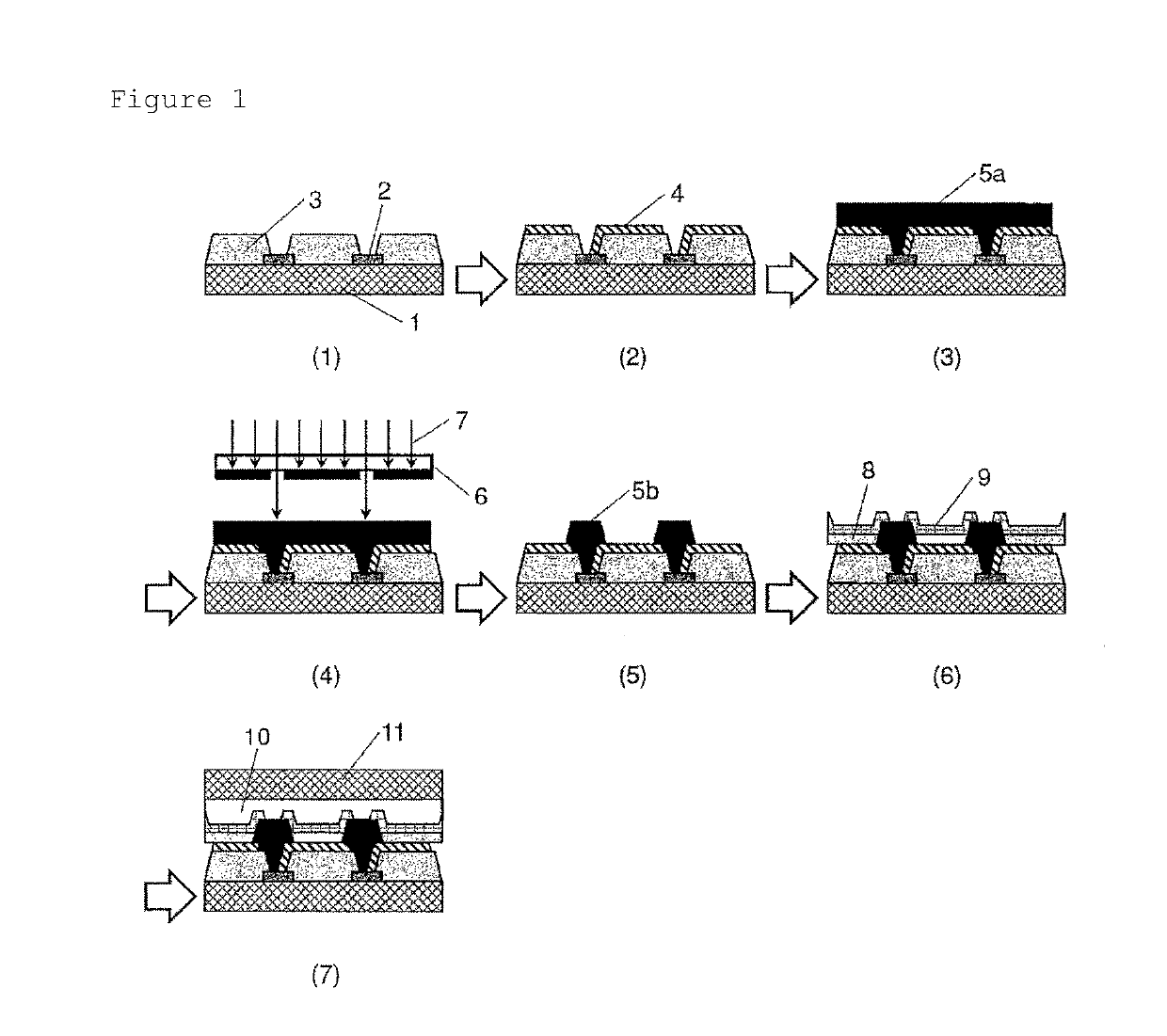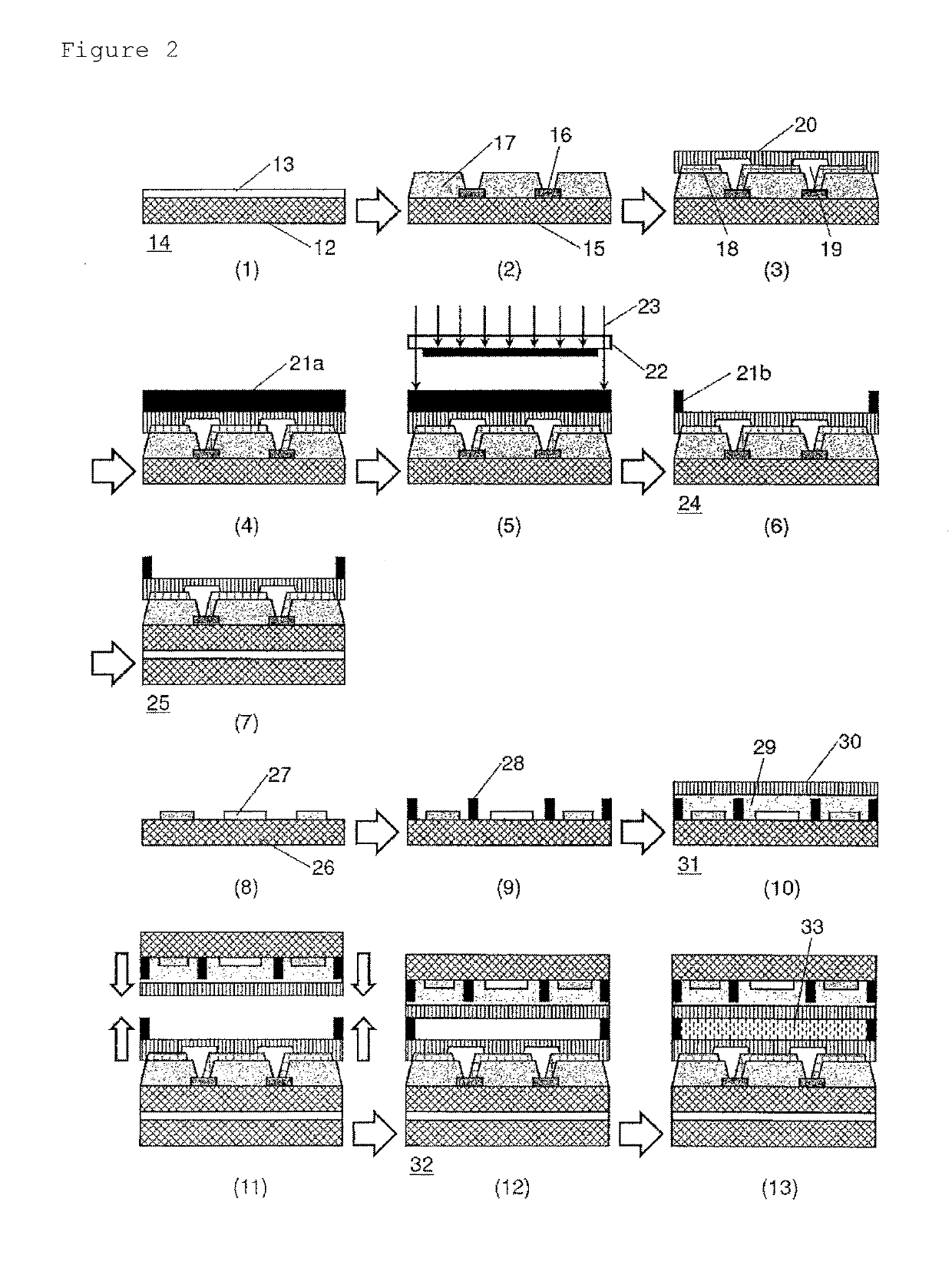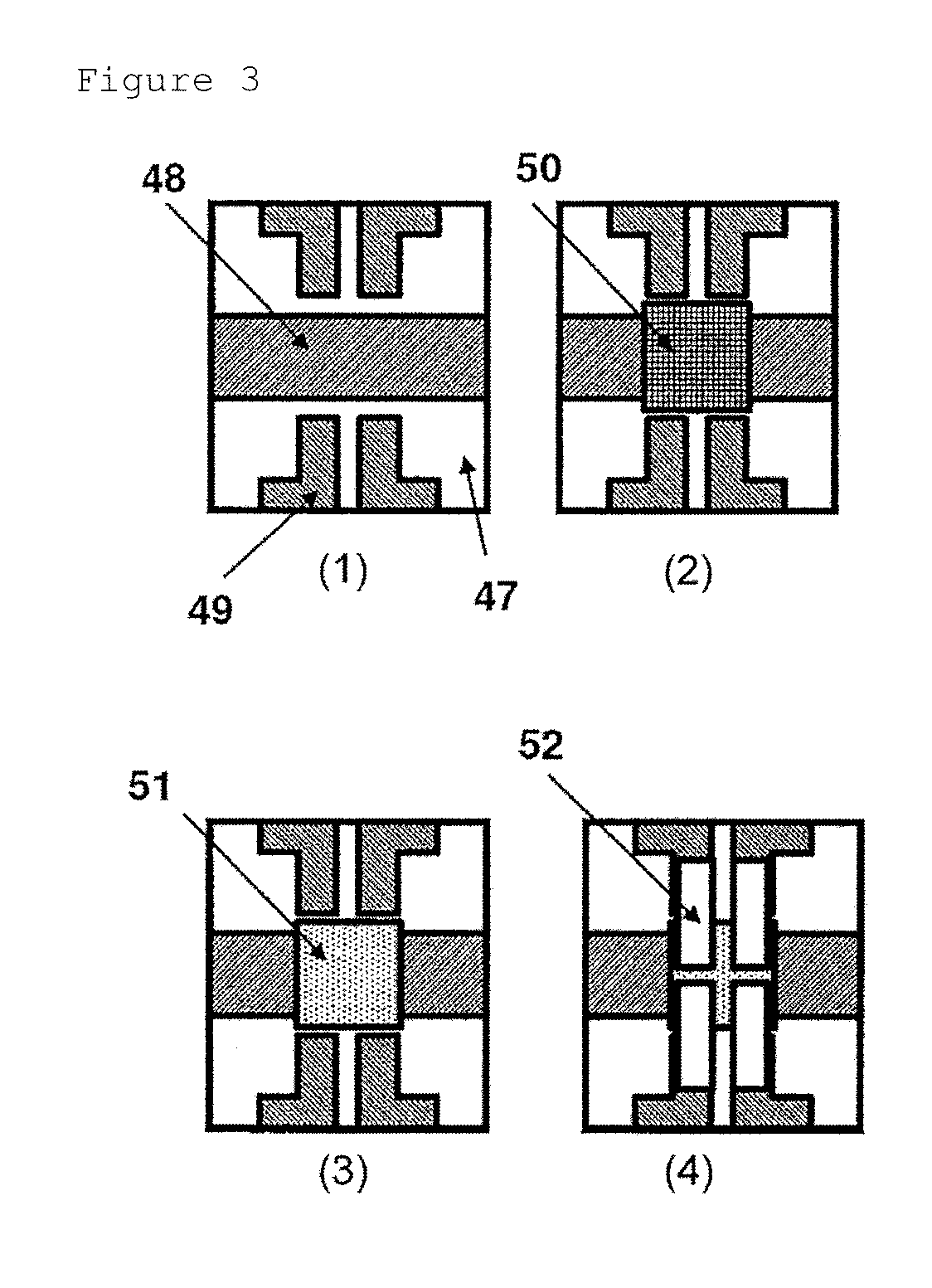Negative-type photosensitive resin composition, cured film, element and display device provided with cured film, and production method therefor
- Summary
- Abstract
- Description
- Claims
- Application Information
AI Technical Summary
Benefits of technology
Problems solved by technology
Method used
Image
Examples
examples
[0705]The present invention will now be illustrated more specifically with reference to Examples and Comparative examples, but it should be understood that the invention is not construed as being limited to the scopes thereof. Some of the compounds used are referred to using abbreviations as listed below.
[0706]5CPL-1: ε-caprolactone modified dipentaerythritol pentaacrylate having five oxypentylene carbonyl structures in the molecule
[0707]6FDA: 2,2-(3,4-dicarboxyphenyl)hexafluoropropane dianhydride; 4,4′-hexafluoropropane-2,2-diyl-bis(1,2-phthalic acid anhydride)
[0708]A-9300-3CL: “NK ESTER” (registered trademark) A-9300-3CL (manufactured by Shin-Nakamura Chemical Co., Lid.; ε-caprolactone modified 1,3,5-tris(acryloxyethyl) isocyanuric acid having three oxypentylene carbonyl structures in the molecule)
[0709]AcrTMS: 3-acryloxypropyl trimethoxysilane
[0710]A-DPH-12E: “NK ESTER” (registered trademark) A-DPH-12E (manufactured by Shin-Nakamura Chemical Co., Lid.; ethoxylated dipentaerythrit...
synthesis example (
A)
[0767]In a three neck flask, 18.31 g (0.05 mol) of BAHF, 17.42 g (0.3 mol) of propylene oxide, and 100 mL of acetone were weighed out and dissolved. To this liquid, a solution of 20.41 g (0.11 mol) of 3-nitrobenzoyl chloride dissolved in 10 mL of acetone was added dropwise. After the end of dropping, the solution was allowed to react at −15° C. for 4 hours, followed by allowing it to return to room temperature. The resulting white solid precipitate was separated out by filtration and vacuum-dried at 50° C. A 30 g portion of the resulting solid material was put in a 300 mL stainless steel autoclave and dispersed in 250 mL of 2-methoxy ethanol, followed by adding 2 g of 5% palladium-carbon. Then, a balloon was used to introduce hydrogen to allow a reaction to continue for 2 hours at room temperature. After the 2-hour period, it was confirmed that the balloon would deflate no more. After the end of the reaction, the solution was filtrated to remove the palladium compound used as cata...
synthesis example 1
Synthesis of Polyimide (PI-1)
[0769]In a three neck flask in a dry nitrogen flow, 31.13 g of BAHF (0.085 mol; 77.3 mol % relative to total quantity of structural units derived from amines and derivatives thereof), 1.24 g of SiDA (0.0050 mol; 4.5 mol % relative to total quantity of structural units derived from amines and derivatives thereof), 2.18 g of MAP as end capping agent (0.020 mol; 18.2 mol % relative to total quantity of structural units derived from amines and derivatives thereof), and 150.00 g of NMP were weighed out and dissolved. To this liquid, a solution of 31.02 g (0.10 mol; 100 mol % relative to total quantity of structural units derived from carboxylic acids and derivatives thereof) of ODPA dissolved in 50.00 g of NMP was added, stirred at 20° C. for 1 hour, and then stirred at 50° C. for 4 hours. Subsequently, 15 g of xylene was added and stirred at 150° C. for 5 hours while boiling water azeotropically with xylene. After the end of the reaction, the reaction soluti...
PUM
| Property | Measurement | Unit |
|---|---|---|
| Fraction | aaaaa | aaaaa |
| Percent by mass | aaaaa | aaaaa |
| Mass | aaaaa | aaaaa |
Abstract
Description
Claims
Application Information
 Login to View More
Login to View More - R&D
- Intellectual Property
- Life Sciences
- Materials
- Tech Scout
- Unparalleled Data Quality
- Higher Quality Content
- 60% Fewer Hallucinations
Browse by: Latest US Patents, China's latest patents, Technical Efficacy Thesaurus, Application Domain, Technology Topic, Popular Technical Reports.
© 2025 PatSnap. All rights reserved.Legal|Privacy policy|Modern Slavery Act Transparency Statement|Sitemap|About US| Contact US: help@patsnap.com



